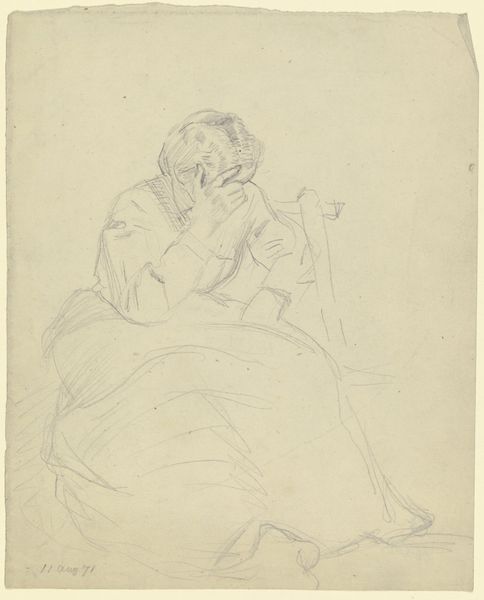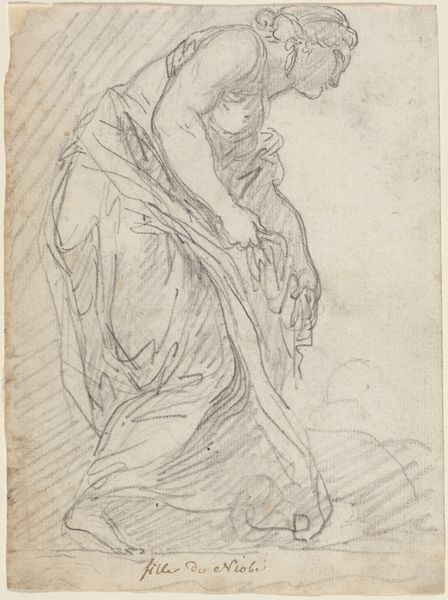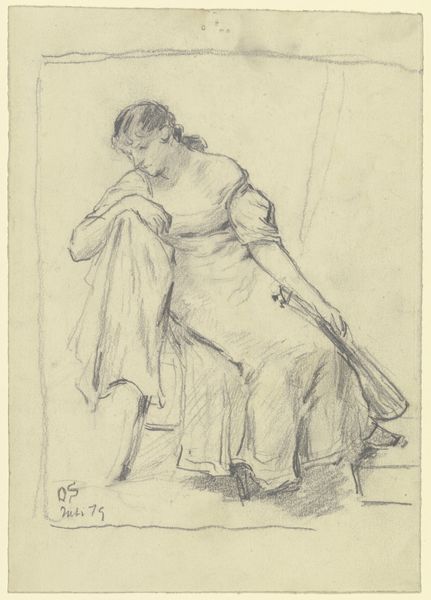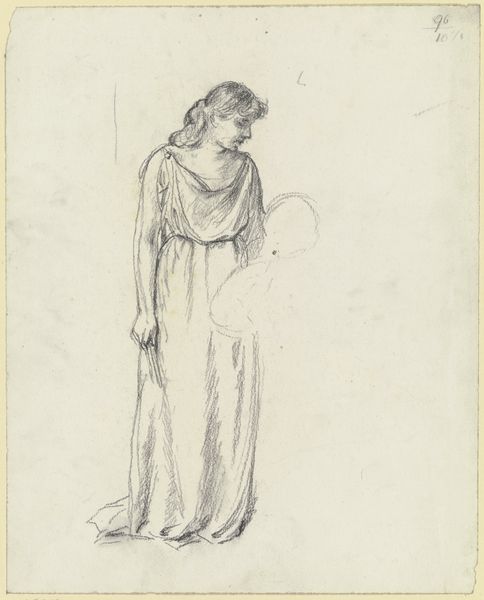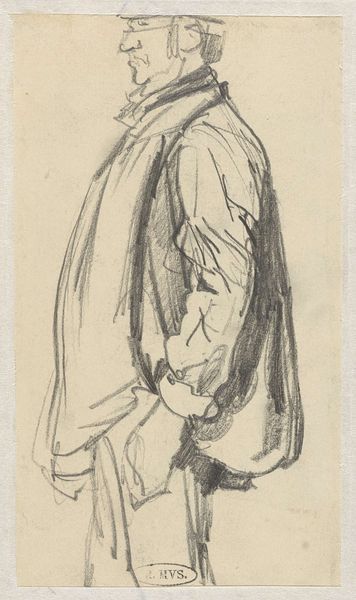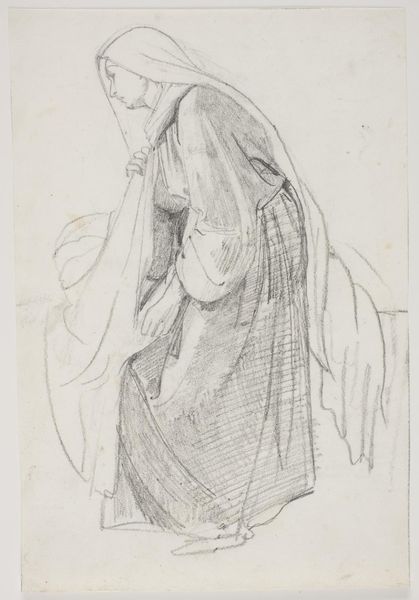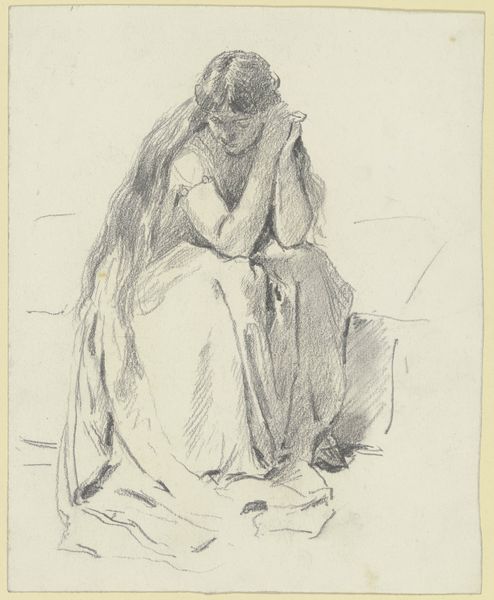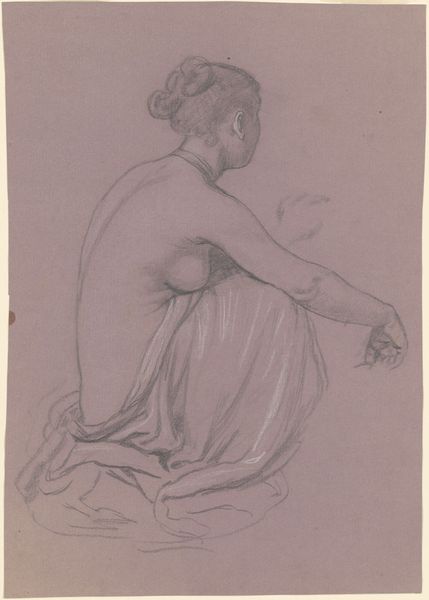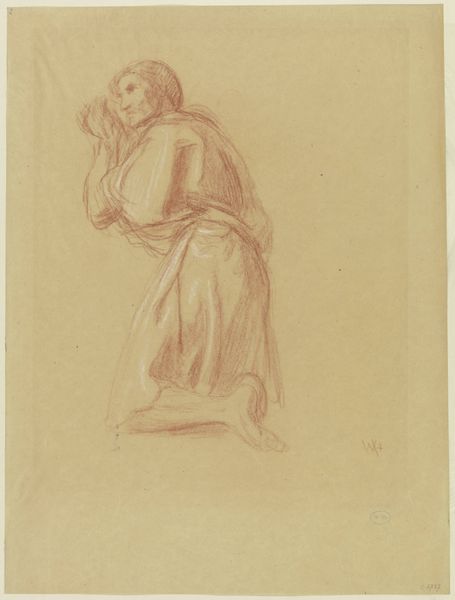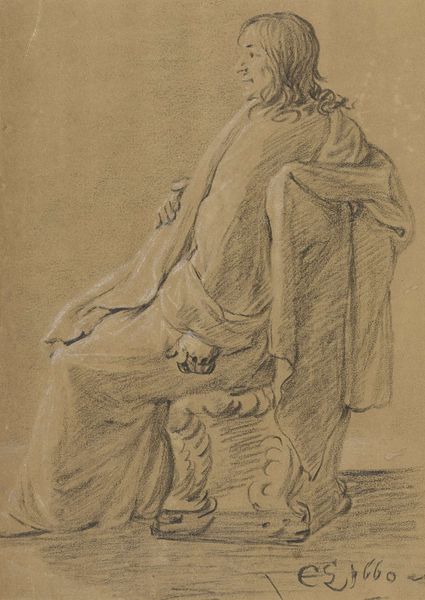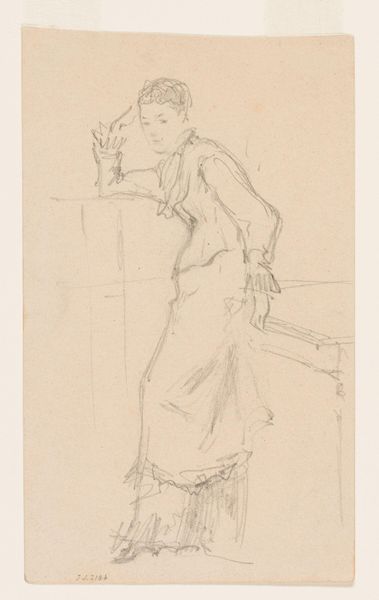
drawing, ink, pen
#
portrait
#
drawing
#
ink drawing
#
pen sketch
#
pencil sketch
#
etching
#
figuration
#
ink
#
intimism
#
symbolism
#
pen
#
pencil work
#
nude
Dimensions: height 270 mm, width 150 mm
Copyright: Rijks Museum: Open Domain
Curator: Let's spend a moment with this drawing by Pierre Puvis de Chavannes. It's titled "Zittende halfnaakte vrouw," or "Seated Semi-Nude Woman," and is believed to have been created around 1895. It's currently held here at the Rijksmuseum. Editor: There's something instantly intimate about this. The sketchy, almost ephemeral lines give it a feeling of capturing a fleeting moment, like a private thought made visible. The use of, looks like sanguine maybe, ink warms what otherwise might feel very clinical. Curator: Absolutely. Puvis de Chavannes was very interested in capturing universal themes of introspection and contemplation, often using the female figure as a vehicle for these explorations. His approach to figuration reflects the late 19th-century Symbolist movement's interest in moving away from academic realism toward inner experience. And he worked very purposefully with mural scale public works alongside private works like this drawing, to broaden arts influence. Editor: Interesting that you point that out! Knowing it may be of its time, it still makes me wonder about access in the means of making and even viewing. Sanguine lends a particular texture, it is an earthly pigment from iron oxide, suggesting a deep connection to the raw material, the drawing has an air of both the intimate and what almost reads as industrial, by its use of line quality as a form, like you said of universal exploration, rather than depiction. Curator: Well, his stylistic choices contributed significantly to his widespread recognition and influence on younger artists. He really bridged a gap, moving away from purely academic styles but influencing even early modernists through his flattened space, his quiet figures, and what was viewed as a very simplified aesthetic. The Salon loved this move into intimate domestic spheres that gave his nudes an intellectual, non-exploitative purpose. Editor: Perhaps "non-exploitative" is where we disagree. Still the raw material with all this focus makes one ponder. Curator: Fair point. Though intended for private consumption, this drawing also points to how even intimate portrayals contributed to wider societal perceptions of women. Thanks, that was interesting. Editor: Yes, getting a closer look at its materiality really shifted how I see the politics and social context around this piece. I see it less like a private expression.
Comments
No comments
Be the first to comment and join the conversation on the ultimate creative platform.

